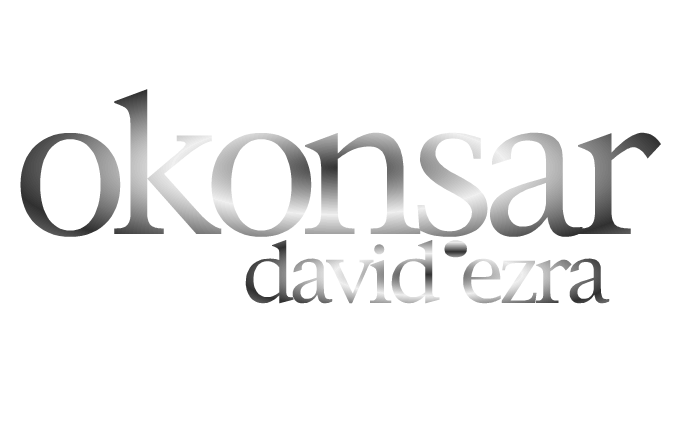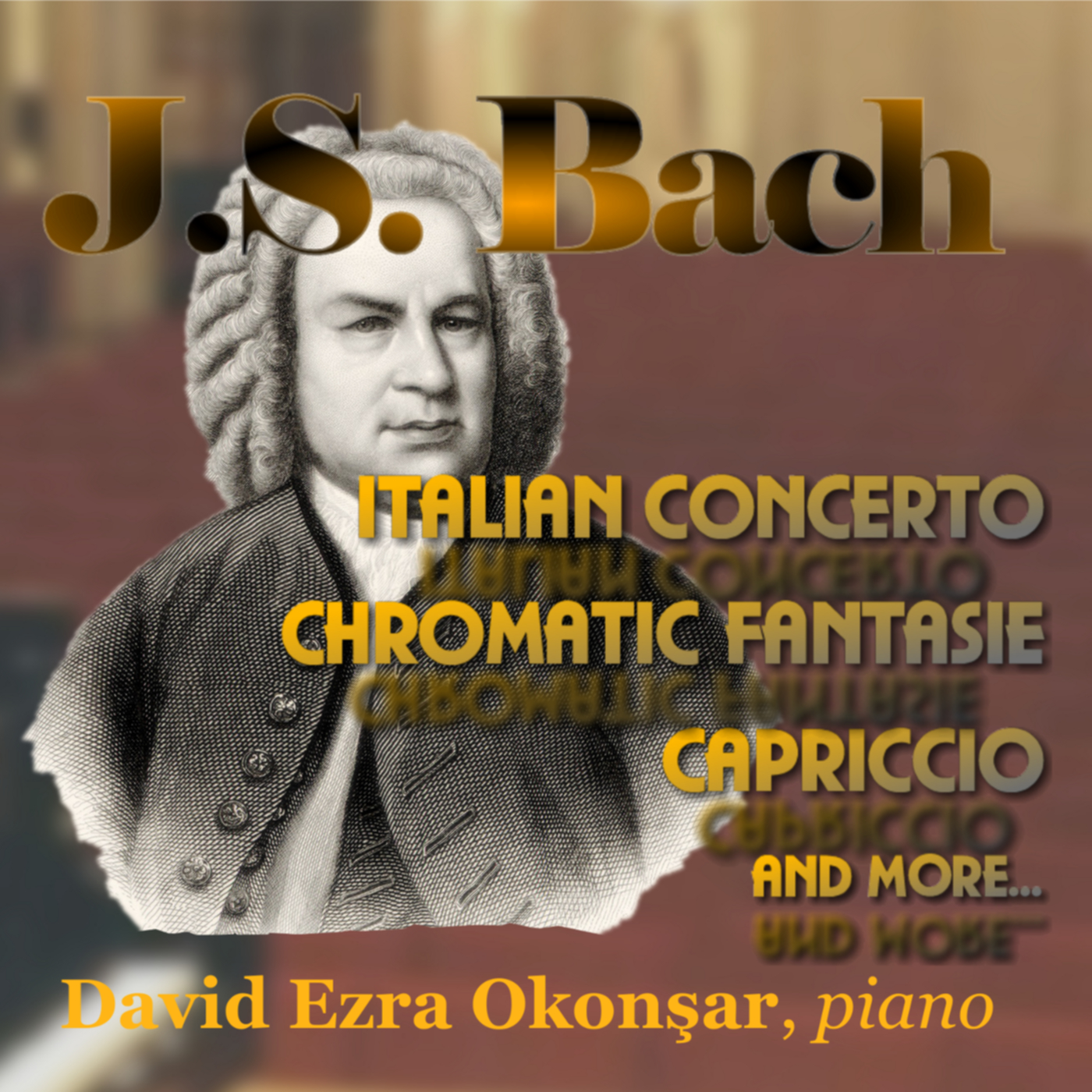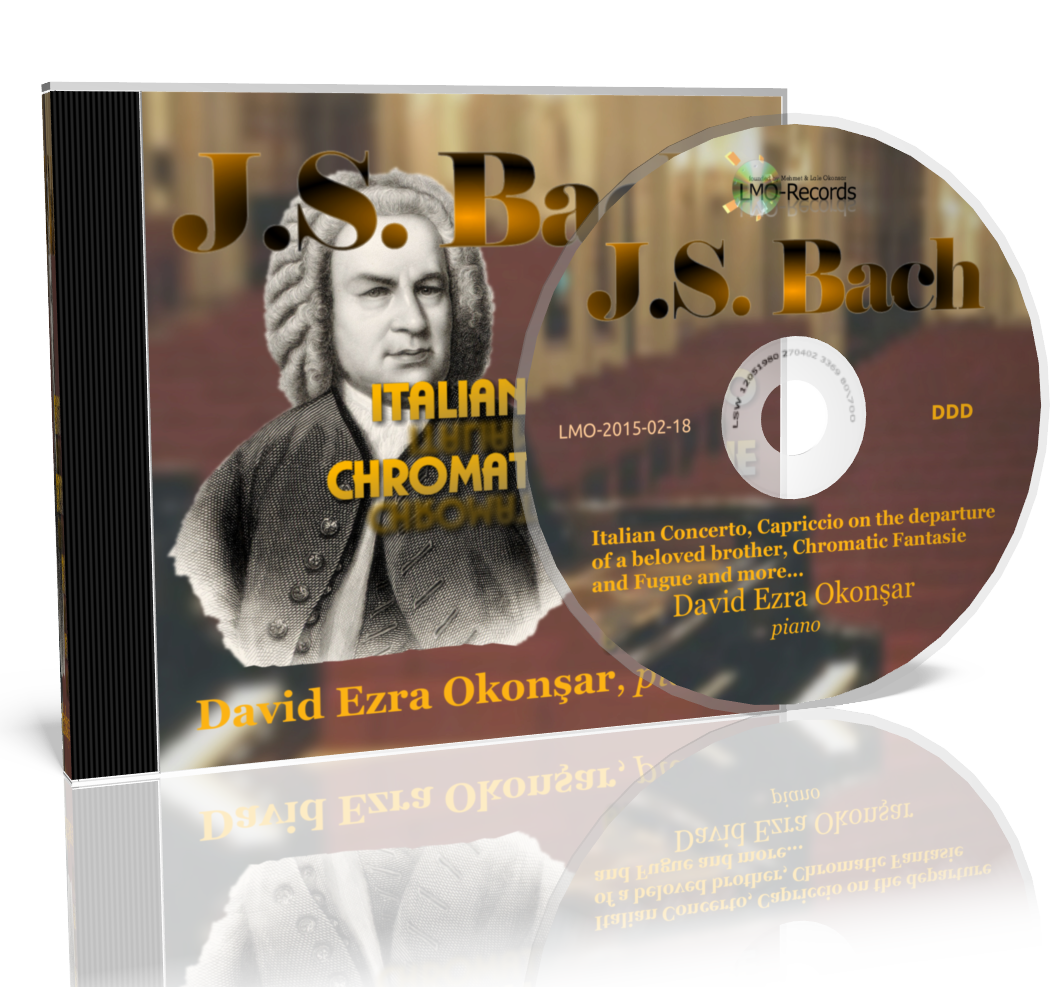
J.S. BACH
Italian Concerto, Chromatic Fantasy, Capriccio And Other Pieces
Best known keyboard works like the Italian Concerto and the Chromatic Fantaisie together with some unfamiliar ones


|
A brief note about the Italian Concerto BWV 971, Capriccio on the departure of a beloved brother BWV 992, Fantasie and Fugue in C minor BWV 906, Chromatic Fantasie and Fugue BWV 903, Fantasie and Fugue A minor BWV 904 and the Fantasie and Fugue A minor BWV 944 as featured in my CD "Bach Italian Concerto and more". Together with the Overture in the French Style, the Italian Concerto makes the second part of the Clavier-Übung, published in 1735 at Nuremberg. The original title reads "Concerto nach Italienischem Gusto" (Concerto in the Italian taste). It is intended to be performed on a harpsichord with two keyboards. The title page of the Goldberg Variations is the only other place where J.S. Bach specified a particular instrument for a keyboard work. The original instructions "forte" and "piano" prove the importance given by the composer to the specific instrumentation of this piece. Bach cherished the "Italian Style" particularly when he was at Weimar (1708-1717). As a Concertmaster he had the possibility to closely explore Italian composers' craft. Even though he often employed themes by Corelli, Albinoni and Legrenzi, he particularly favored Vivaldi. Following the tradition of the time, he transcribed many of Vivaldi's concertos, originally composed for other instruments to organ or harpsichord. In his transcriptions, Bach never re-writes the music as it is. He always embellish a theme by special ornamentations or even harmonizations. The Italian Concerto follows the framework initiated by Corelli and Vivaldi: fast, slow and fast movements. The first movement of the Italian Concerto, rapid but with no tempo indication, is also complying with the "Italian" style as exposition, development and an identical (re) exposition. "Solo" and "tutti" sections are clearly delimited and further emphasized by the indications "piano" and "forte". The second movement, "Andante" is the best part of the work with its "through-composed" beautiful melodic line evolving over an "ostinato" left hand, typical of the Italian masters and remarkable in its elegance. The last movement "Presto" is similar to the first in its overall structure. With this piece Bach realized one perfect harmony between the Italian and Germanic styles. A "young-Bach" composition, probably from 1704-1706: The Capriccio on the departure of a beloved brother BWV 992 is referring to the leaving of his elder brother Johann Jacob appointed oboist to Charles XII of Sweden. J.S. Bach is then organist at Arnstadt and engaged to his cousin Maria Barbara. During the last months of 1705 he was traveling through Germany, including Lübeck to fulfill his dearest wish: to hear the famous Dietrich Buxtehude (1637-1707) organist at Marienkirche. Back at home he will resign and relocate to Mülhausen. This charming Capriccio is composed at a time when Bach was spending endless hours copying by hand the works of great composers of his time. The famous composers of the time which Bach studied in depth were: Boehm from Germany, Marchand, Grigny, Couperin from France, Vivaldi and Albinoni from Italy. Among them one he particularly favored and replaced on the master's death in 1723 was the Cantor of the Saint-Thomas of Leipzig: Johann Kuhnau (1660-1722). It is probable that the "Biblical Sonatas" (Biblische Historien) by Kuhnau, published in 1700, where the composer depicts with imagination and craft various scenes of the Tora ("Old Testament"), impacted on this piece. The six pieces are that many delicious "scenes" with evocative Italian and German subtitles depicting the farewell and leave of Johann Jacob. The famous Chromatic Fantasie and Fugue BWV 903 is first published in 1802. This extremely popular piece is probably composed in Köthen between 1717 and 1723 and re-worked in Leipzig in 1730. This set is one of the works by J.S. Bach who made the strongest impact to the romantic era composers. No other composer than J.S. Bach at his time realized a keyboard piece with such a dramatic impact. The Fantasia is presented almost as an "improvising chart". Only the basic musical structure is given. It can be performed in numerous ways, all can be right (or wrong). The speed of the many lines are indicated vaguely, of course there is no dynamic or tempo indication, and the arpeggiated chords can be performed in all possible ways. At the end what makes a good rendition of the piece is the last overall impression it makes. The piece articulates as a vast Toccata. Fast and wide scale lines running through the entire keyboard (of that time), which certainly had an incredible impact on the listeners of the epoch. Arpeggiated chords with extreme richness, including un-resolved harmonic tensions and provocative dissonances alternate with cross-hands sections in a brilliant, dazzling ecriture. Then follows a vast "arioso" sectionalized by arpeggiated chords which bring many unexpected harmonizations. A long chromatic coda ends the Fantasie by mixing elements of the initial "Toccata" and the following "Arioso". The Fugue contrasts with the preceding Fantasie, it begins with a calm and serene exposition of the theme, almost in a "strict counterpoint" style. However it will soon develop into "free-style" fugal ecriture. The counter-subject is much more flexible, this counter-subject will provide for all the lengthy divertimentos to follow. Seldom, if never in the harpsichord music of J.S. Bach, the theme appears once doubled at octaves in the bass with "block-chords" on the other hand towards the end. A Frescobaldi style Toccata starts the Fantasie and Fugue A minor BWV 904. In many other places, for example in the Fugue in E major of the Well-tempered Clavier II, Bach employs the "old-fashion" polyphonic style with grandeur and amazing emotional impact. The Fantasie here adopts such a style: a noble reserve and profound beauty. The four-voice double-theme fugue is one Bach's bests. The gay and energetic first theme is in complete contrast with the supplicant, descending chromatic second one. The mixture of both is making for a very interesting fugal texture. The ten measures long Fantasia from the Fantasie and Fugue A minor BWV 944 is like one single phrase taken out from the Chromatic Fantasie. The indication "Arpeggio" instructs the performed to "improvise" something out of those chords by arpegiating them in many ways. Then follows one hundred ninety eight bars (typically 8 pages) long, single-themed fugue. The mono-rhythmic (with 16th. notes only) theme is extending to six full bars. It is the initial aspect of the organ fugue theme BWV 543. The fugue becomes a "moto-perpetuo" making use of most ranges of the keyboard.
|
|||||||||||||
| |
|||||||||||||
| |
|||||||||||||
|
|
|||||||||||||
|



